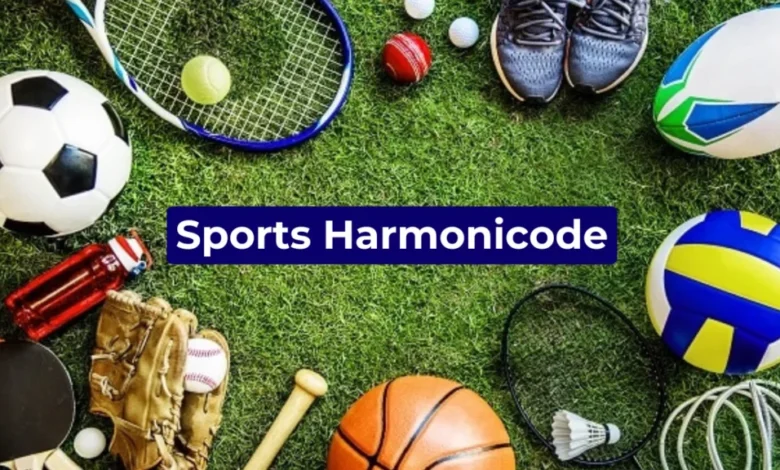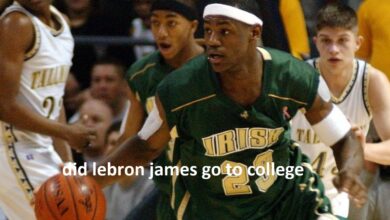Sports Harmonicode: Understanding the Concept, Its Impact, and Future in Athletics

Introduction: What Does “Sports Harmonicode” Really Mean?
The term sports harmonicode may sound technical at first, but it represents an emerging way of looking at the harmony, rhythm, and structured patterns within sports. Just like music has a code of harmony, sports too have underlying codes that govern performance, teamwork, and outcomes. The phrase blends “harmony” with “code,” hinting at a scientific and artistic approach to understanding how athletes, teams, and even fans interact with sports on a deeper level.
In recent years, analysts, trainers, and enthusiasts have started using “harmonicode” to describe the interconnected rhythm between an athlete’s physical condition, mental focus, and environmental factors. Think of it as the hidden blueprint that makes a game flow the way it does. From the way a soccer team synchronizes their passes to the rhythm of a tennis rally, sports harmonicode is about finding patterns that optimize performance.
This article will break down what sports harmonicode means, how it applies across different sports, and why it could become a defining concept in the future of athletic performance and analysis.
The Science Behind Sports Harmonicode

To understand sports harmonicode, it helps to first think about patterns in motion. In physics and biomechanics, movement is rarely random—it follows repeatable rhythms. When athletes train, they don’t just strengthen their muscles; they fine-tune their body’s timing, balance, and synchronization. This is where the idea of a “harmonic code” comes in.
Take sprinting as an example. The length of strides, the frequency of foot strikes, and the breathing rhythm all align to form a performance code. Coaches analyze these patterns to see if adjustments can lead to faster times. Similarly, in team sports, strategies like passing rhythms in basketball or pressing formations in soccer show a collective harmonicode that determines success.
Researchers are now exploring how technology—like motion sensors, AI-driven analysis, and biometric data—can decode these patterns. By doing so, they can help athletes achieve peak performance without overtraining, reduce injury risks, and build more sustainable athletic careers. The science of sports harmonicode is therefore both a performance tool and a safety net for athletes.
Sports Harmonicode in Team Dynamics
While individual athletic performance is important, the concept of sports harmonicode truly shines when applied to team sports. Teams function best when players move in sync, communicate effectively, and anticipate each other’s actions without hesitation. This is the very definition of harmony in a competitive setting.
For example, in soccer, a well-executed triangle passing drill creates a rhythm where each player already knows the next move. This isn’t luck—it’s a harmonic pattern drilled into the team’s DNA. In basketball, the fluid motion of a fast break works only if each player aligns with the timing and positioning of their teammates. Sports harmonicode captures these dynamics and allows coaches to evaluate whether a team is playing in harmony or struggling with misalignment.
Even in sports like volleyball or hockey, understanding harmonicodes helps in reading opponents. A team that identifies and disrupts the opponent’s rhythm can quickly turn a match in their favor. This makes the study of sports harmonicode as much a tactical advantage as it is a training tool.
Individual Athletes and Their Personal Harmonicode
Beyond teams, each athlete has a unique harmonicode. This personal rhythm comes from a blend of genetics, training, mindset, and even lifestyle habits. Some athletes naturally perform better in high-pressure situations because their mental and physical codes are wired to thrive under stress. Others rely heavily on repetitive training to align their performance with predictable harmonic patterns.
Take tennis as an example. A player’s serve is not just about raw power—it involves toss height, racket speed, foot placement, and body rotation, all of which must harmonize in split seconds. Similarly, in boxing, the ability to read an opponent’s rhythm and adjust your own makes the difference between landing a knockout punch and missing an opportunity.
Understanding an athlete’s personal sports harmonicode allows for tailored training programs. Instead of a “one-size-fits-all” approach, coaches can design regimens that align with the athlete’s natural patterns, helping them maximize strengths while addressing weak spots.
Technology and the Future of Sports Harmonicode
With advancements in sports tech and AI, decoding harmonicodes is becoming more practical than ever before. Wearable devices now track metrics like heart rate variability, stride length, and muscle activation. AI software then analyzes this data to identify hidden patterns that even trained eyes might miss.
Imagine a marathon runner whose wearable device picks up on subtle inefficiencies in stride rhythm. By tweaking their harmonicode, the runner conserves more energy, avoids overuse injuries, and potentially shaves minutes off their time. In professional leagues, such technology could redefine training and even recruitment, as teams begin searching for athletes whose natural harmonicodes align with specific tactical philosophies.
Virtual reality (VR) and motion capture also play a role. By simulating different game scenarios, athletes can practice adjusting their harmonicode in real time, learning how to adapt when the rhythm of the game changes. This kind of precision training is already revolutionizing sports performance, and as technology evolves, the study of sports harmonicode will only deepen.
The Mental and Psychological Side of Harmonicode
Sports aren’t just physical—they’re deeply psychological. The mental side of sports harmonicode is about focus, mindfulness, and the ability to maintain rhythm under pressure. Elite athletes often describe being in “the zone,” where everything flows effortlessly. This state is, in many ways, the purest example of a harmonicode in action.
When stress, anxiety, or distraction disrupts an athlete’s mental flow, their harmonicode gets out of sync. That’s why modern training programs often include meditation, breathing exercises, and visualization. These techniques aren’t just about relaxation—they’re about realigning the mind with the body’s natural rhythm.
For teams, mental harmonicodes matter too. A locker room filled with tension can disrupt the collective rhythm, leading to poor performance. Coaches who recognize this can use team-building exercises and psychological strategies to restore harmony and ensure the group functions as one cohesive unit.
Why Sports Harmonicode Matters for Fans and Analysts
Sports harmonicode isn’t only valuable for athletes and coaches—it also enhances the fan experience. Modern sports fans crave deeper insights, and understanding the hidden rhythms of a game adds an extra layer of excitement. Analysts can use harmonicode principles to explain why certain plays succeed or fail, making broadcasts more engaging and educational.
For fantasy sports players and bettors, sports harmonicode might even become a predictive tool. If a team’s rhythm looks off before a major game, sharp analysts could anticipate upsets. As data analysis becomes more sophisticated, harmonicode insights could become as common as traditional stats like goals, assists, or batting averages.
Even casual fans benefit. Recognizing the flow of a game and the underlying harmony between players makes watching sports more immersive. It transforms the experience from simply watching points being scored to appreciating the artistry behind every play.
Conclusion: The Future of Sports Harmonicode
At its core, sports harmonicode is about uncovering the hidden patterns that make athletics both a science and an art. From individual athletes fine-tuning their stride rhythms to entire teams syncing up for a championship run, the idea of a harmonic code runs through every level of sports.
As technology advances and sports science continues to evolve, understanding and applying sports harmonicode will become an essential part of training, analysis, and even fan engagement. It’s more than just a buzzword—it’s a concept that highlights the beauty of rhythm, balance, and flow in human performance.
In the future, don’t be surprised if coaches, analysts, and even broadcasters are talking openly about harmonicodes. Just as music relies on harmony to create beauty, sports rely on harmony to create greatness. And once you recognize the patterns behind the game, you’ll never watch sports the same way again.



